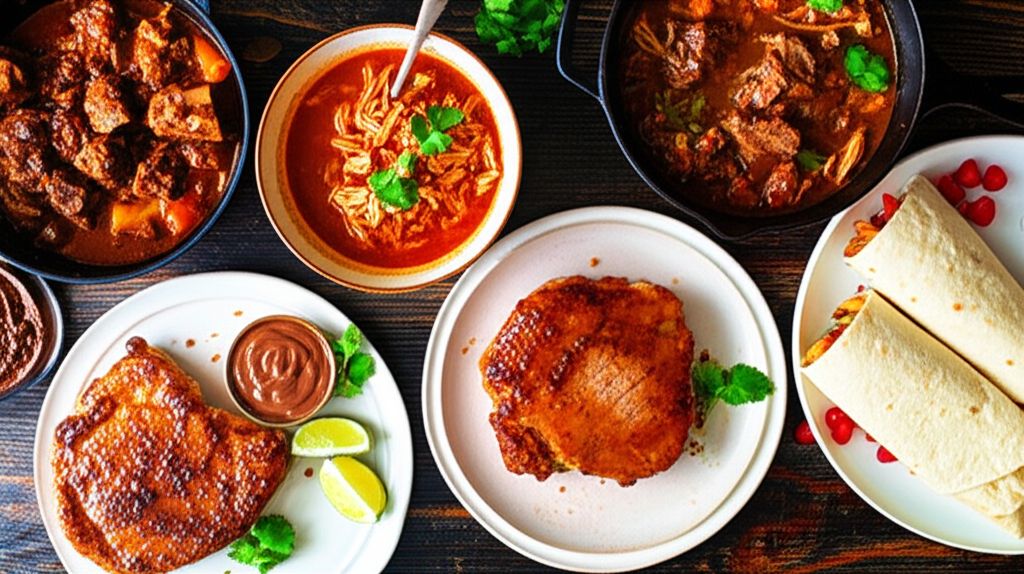A Culinary Tour of Indonesia: 5 Must-Try Indonesian Recipes
Discover the vibrant flavors of Indonesia with our top 5 recipes! From spicy Ayam Penyet to sweet Kecap Manis, this culinary journey will tantalize your taste buds. Explore authentic Indonesian dishes and cooking tips today!
Indonesian cuisine is a vibrant tapestry woven from diverse regional influences, creating a truly unique and exciting culinary experience. The archipelago's geographical location and rich history have resulted in a blend of flavors from across Southeast Asia, China, India, and Europe, all seamlessly integrated into a cuisine known for its bold spices, aromatic herbs, and a delightful balance of sweet, sour, spicy, and savory notes. Whether you’re a seasoned foodie or a curious home cook, exploring Indonesian food is a delightful adventure for the senses.
This article delves into five essential Indonesian dishes, providing you with delicious recipes and insightful tips to recreate these culinary masterpieces in your own kitchen. Get ready to embark on a flavorful journey through the heart of Indonesia!
1. Ayam Penyet Pedas (Indonesian Spicy Penyet Chicken)
Description: Embark on a fiery culinary journey with Ayam Penyet, an Indonesian smashed fried chicken dish that explodes with flavor. Infused with aromatic spices and served with a vibrant, homemade chili sambal, this dish is a true testament to Indonesian cuisine.
Why You Should Try This: Ayam Penyet's popularity stems from its addictive combination of crispy, juicy chicken and intensely flavorful sambal. It's a crowd-pleaser that's both satisfying and memorable.
Tip or Fun Fact:
- 1. For a less spicy version, reduce the number of red chiles in the sambal.
- 2. Salam leaves can be found at most Asian grocery stores. If unavailable, curry leaves make a decent substitute, though the flavor profile will be slightly different.
- 3. Adjust the amount of lime juice in the sambal to your personal preference. Some prefer a tangier sauce.
- 4. The shrimp paste adds a unique umami flavor to the sambal. If you are not a fan, you can omit it, but the flavor will be slightly different.

2. Kecap Manis (Sweet Soy Sauce)
Description: Embark on a culinary adventure to Indonesia with this luscious Kecap Manis recipe. This sweet soy sauce, essential in Southeast Asian cuisine, elevates stir-fries, marinades, and dipping sauces with its rich, caramel-like flavor. Simple to make and infinitely versatile, this homemade version surpasses any store-bought alternative.
Why You Should Try This: Kecap Manis is a pantry staple in Indonesian cooking, adding depth and sweetness to countless dishes. Making it at home ensures control over ingredients and a superior taste.
Tip or Fun Fact:
- 1. For a deeper, more complex flavor, consider using palm sugar instead of granulated white sugar.
- 2. Adjust the amount of ginger and garlic to your preference. More ginger will result in a spicier sauce.
- 3. If you can't find fresh curry leaves, you can omit them or substitute with a pinch of dried curry powder, although the flavor will be slightly different.
- 4. The Kecap Manis will thicken further as it cools. If it becomes too thick, you can add a little water to thin it out.
- 5. This sauce is excellent as a glaze for grilled meats, a dipping sauce for spring rolls, or a key ingredient in Nasi Goreng (Indonesian fried rice).

3. Spicy Sambal Shrimp
Description: Dive into a vibrant and fiery culinary experience with our Spicy Sambal Shrimp. This dish features succulent shrimp, perfectly pan-seared and infused with the rich, complex flavors of sambal oelek, creating a tantalizing balance of heat and savory goodness.
Why You Should Try This: This dish is quick, easy, and bursting with flavor, making it a perfect weeknight meal or appetizer. The combination of spicy sambal and succulent shrimp is incredibly satisfying.
Tip or Fun Fact:
- 1. For an extra layer of flavor, consider adding a splash of fish sauce or a dash of soy sauce to the shrimp while cooking.
- 2. Adjust the amount of sambal oelek to suit your preferred spice level. Start with less and add more to taste.
- 3. If you don't have sushi rice, medium-grain rice can be substituted.
- 4. Garnish with sesame seeds for added texture and visual appeal.

4. Spicy Tomato Chicken (Ayam Masak Merah)
Description: Embark on a culinary journey to Southeast Asia with this vibrant Spicy Tomato Chicken, known as Ayam Masak Merah. A symphony of spicy, sweet, and savory flavors dances on your palate in this beloved Malay/Indonesian dish. Tender chicken pieces are enveloped in a rich, aromatic tomato and chili sauce, creating an unforgettable dining experience.
Why You Should Try This: Ayam Masak Merah is a classic for a reason – its rich, flavorful sauce perfectly complements the tender chicken. It’s a comforting and satisfying dish perfect for any occasion.
Tip or Fun Fact:
- 1. For a richer flavor, use chicken thighs instead of the whole chicken. Adjust the amount of chili peppers to your spice preference. For a smoother sauce, blend the tomatoes before adding them to the skillet. This dish is even better the next day, as the flavors have time to meld together.

5. Cap Cai
Description: Embark on a culinary journey to the heart of Jakarta with Cap Cai, a vibrant and versatile Chinese-Indonesian vegetable stir-fry. This pescetarian-friendly delight is bursting with fresh flavors and textures, perfect as a light yet satisfying meal. Serve it over a bed of fluffy brown rice or alongside crispy fried tofu for a complete and wholesome experience. Feel free to customize with your favorite protein!
Why You Should Try This: Cap Cai's versatility and adaptability make it a favorite. It's a healthy and flavorful option that's easy to customize to individual preferences and dietary needs.
Tip or Fun Fact:
- 1. For a vegetarian option, omit the shrimp and add extra vegetables or tofu.
- 2. Feel free to substitute chicken or another protein for the shrimp.
- 3. Adjust the amount of fish sauce to your preference. If you're sensitive to salt, start with less and add more to taste.
- 4. Serve with brown rice or fried tofu.

Indonesian cuisine offers a captivating blend of flavors and textures, promising a culinary adventure with each bite. These five recipes provide just a taste of the rich diversity Indonesian cooking has to offer. So, gather your ingredients, embrace the spices, and embark on your own Indonesian culinary journey!















